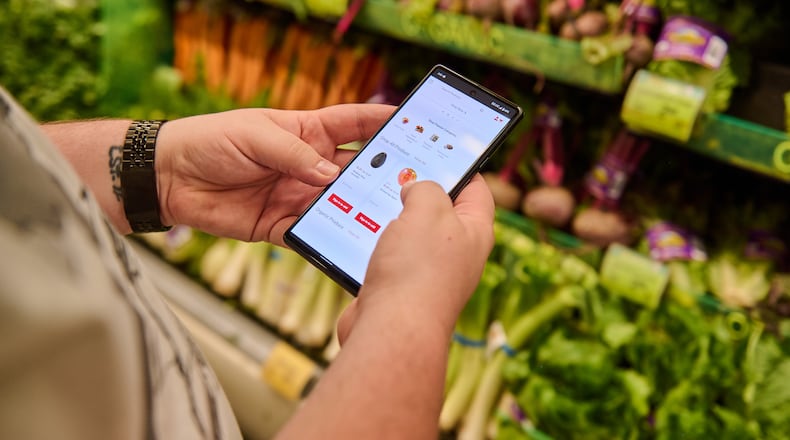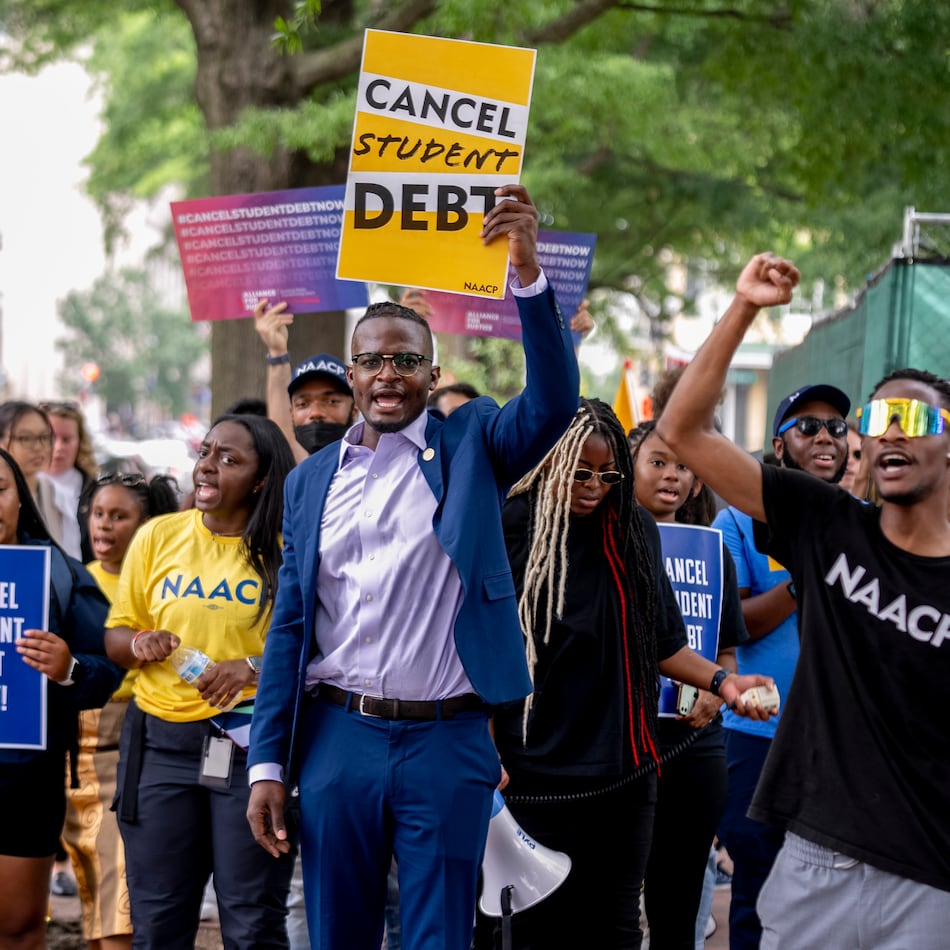Gracie Williams spends a lot of time thinking about her bills. As the primary earner in a household that includes her ailing mother and younger brother, the South Carolina librarian is constantly weighing how to divvy up her $2,100-a-month take-home pay and late father’s retirement benefits.
After the house and car payments, her mother’s medical bills, filling the gas tank and other expenses, there’s little left for groceries. “It feels like my dollar is being stretched to its absolute limit and it’s still not enough,” she said.
But Williams, 31, has found a way to feed her family: in installments.
She’s using Klarna, a buy now, pay later (BNPL) tool best known for helping people finance Pelotons, laptops and other big-ticket merchandise. Klarna and other BNPL services are increasingly being tapped for groceries – usage surged 40% in the first two months of 2023, according to data from Adobe Analytics.
And with inflation still elevated and consumer debt at record highs, industry experts expect more Americans will lean on such services to afford necessities like food and school supplies.
“The consumer is incredibly adept at finding ways to stretch their spending and, healthily or not, BNPL has certainly provided that outlet,” said Simeon Siegel, an analyst with BMO Capital Markets. “It’s not the only way, but I think it has been the easiest way in recent years.”
Such services have been percolating for years but exploded in popularity early in the coronavirus pandemic, when millions of Americans lost their jobs. Even as the job market and broader economy have recovered, many consumers have continued to lean on payment installment programs, particularly as rapid inflation has made everyday needs like groceries, gas, housing and health care much more expensive. The $309 billion industry is projected to swell more than 25% by 2026, according to analytics company GlobalData.
Services like Klarna, Affirm and Afterpay offer cash-strapped consumers “immediate liquidity,” said Marco Di Maggio, a professor of business administration at Harvard Business School who has studied the industry. Households earning $20,001 to 50,000 a year, women, and Black and Hispanic adults are more likely to use BNPL, according to surveys by the Consumer Financial Protection Bureau and the Federal Reserve.
Users also don’t have to pay interest if they meet the payment in four installments. This is what’s appealing to Williams, whose grocery hauls at Walmart have doubled in the past year.
“I’ve been pretty good as a bargain shopper – I typically always buy generic – but even generic is sometimes too expensive these days,” Williams said. Her family has cut out steak, instead going for cheaper alternatives like hamburger meat, chicken and pork chops. But there are purchases she can’t forgo, such as feminine hygiene products and pet food.
By ordering online and picking up in store, she can use Klarna to break up payments when she knows her latest paycheck is going straight to bills.
Although many Americans still have a financial cushion from pandemic-era savings and stimulus checks, data shows that the lowest-income households, earning less than $50,000 a year, have already worked through most of that extra money.
This is worrisome for many consumers as they gear up for back-to-school shopping and the holidays. Some of the country’s largest retailers – Target, Amazon and Walmart – are responding in force, promoting major sales in July.
Although the Federal Reserve has rapidly raised interest rates in hopes of slowing the economy enough to bring down inflation, it still has a long way to go. Overall prices are up 4% from a year ago – an improvement from last summer’s inflation rate of 9.1%, but still twice as high as the Fed would like. And there are other ominous signs. Last month, businesses cut hundreds of thousands of workers’ hours, forcing them into part-time roles, according to the Bureau of Labor Statistics.
As a result, many shoppers say they have yet to feel much relief at the supermarket, where the average family in June spent about $973, up 3.5% from last year, according to the U.S. Department of Agriculture.
Tara Dietz is all too familiar with the sticker shock; her grocery costs “increased exponentially” this year. Her Crohn’s disease forces her to buy higher priced gluten- and dairy-free products. Salmon, a key protein in her diet, has gone up $4 a pound, she said. Using Affirm at Wegmans and Whole Foods has become a helpful budgeting tool. (Whole Foods is owned by Amazon, whose founder, Jeff Bezos, also owns The Washington Post. Interim CEO Patty Stonesifer sits on Amazon’s board.)
“When I do buy now, pay later, it mitigates the stress of trying to figure out if I can afford it,” said Dietz, 34, who lives in Armonk, N.Y.
About 1 in 8 consumers in the Fed’s survey used a BNPL service in the last 12 months, up slightly from 10% the year before. Apple, PayPal and credit card companies like Chase and American Express have added the service.
Affirm, the only U.S. public company solely focused on BNPL, reported in May that active consumers grew 26% year-over-year in the third quarter of 2023. But Di Maggio noted that these companies attracting more customers doesn’t mean they are becoming more profitable.
“It might mean – in the credit market – that you are attracting more marginal customers, so it’s actually worse for business,” he said. BNPL companies rely on loans to operate, so rising interest rates have been a huge financial hit.
With mounting pressure on consumers “pushing a lot of people over the edge,” it’s unsurprising that Americans are finding creative ways to get by, said Bruce McClary, senior vice president of communications at the National Foundation for Credit Counseling. Such services appeal to many people because they can avoid credit card interest rates and take advantage of rewards points. The user-friendly apps also make it easy to track your debts.
But it can also be a “alternate escape route” for consumers who have bad credit and “maxed out” their other options, McClary said. With a minor screening processes, it’s easier to get approved for BNPL service than to acquire a credit card or be approved for a loan.
“It creates a potentially dangerous situation,” he said.
While the average interest rate for credit cards is about 24%, according to LendingTree, most BNPL companies don’t charge interest. But some do enforce late fees or send unpaid debts to collection agencies. After one missed payment, Afterpay pauses the user’s account and charges a late fee up to $8 or 25% of the cost of the original order.
U.S. households are holding a record $17 trillion in debt, including nearly $1 trillion in credit card debt, according to the New York Fed’s quarterly household debt and credit report. And although delinquencies slowed during the pandemic, there are signs that Americans are increasingly falling behind on credit card payments, car loans and mortgages. Economists say many households budgets will be further squeezed by student loan payments – come Oct. 1, nearly 44 million people will have to start paying down college debt. The average monthly payment, according to the investment bank Jefferies, will be $393.
But while BNPL programs can offer a temporary crutch for consumers, experts warn that there are also immediate downsides. Consumers, for example, are more likely to overspend when they know they won’t have to pay in full, according to Di Maggio. This also helps explain why merchants are so willing to give up about 5% of their sales to such services, he said.
Such arrangements – which often skirt consumer protection rules – can have even more downsides when they’re longer-term, he said. If users fall behind, they often have to pay late fees and could end up dinging their credit scores. And when it comes to paying back debts, many borrowers are more likely to prioritize other bills, such as credit cards, car loans and mortgages, Di Maggio said.
“Which one do you think they would default on first?” Di Maggio said. “That’s sort of the issue with most of these products, is that they are at the bottom of the hierarchy for consumers.”
Consumer watchdogs have expressed concerns over the lack of regulation on these services. By making the service “pay in four,” allowing users to pay in four installments, the companies don’t have to abide by the Fair Lending Act, which mandates certain consumer protections. Most BNPL companies also only do negative reporting, Di Maggio said, meaning the only credit information they make public is when a customer misses a payment.
“Most of those companies don’t do positive reporting, so if you repay in four installments and everything is fine, nobody knows,” he added, making it harder for younger consumers with no other borrowing history to build credit.
Williams, who is back in school and accruing more debt with her student loans, is thankful to have services like Klarna to help feed her family. On the rare occasion, though, she finds ways to treat herself using the service, like buying books, a new outfit or purse from Hot Topic.
“I don’t really have much money left in my paycheck – and life kind of sucks – so sometimes I will use it to get myself a little something . . . for more pleasurable needs instead of just actual needs,” she said.
About the Author
Keep Reading
The Latest
Featured




